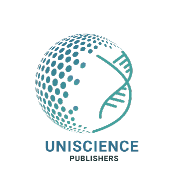The rhizosphere is the thin region of soil directly influenced by root secretions and microbes, known as the root microbiome. The rhizosphere associated with the roots of a plant contains numerous beneficial bacteria, fungi, and other microorganisms. Microbial constitution plays a vital role in a plant’s growth cycle by stimulating its morphology, physiology, and development. Several species in the soil rhizosphere are supportive of plant growth, development, and productivity. The beneficial plant-microbe relationship within the rhizosphere is the key determinant of soil health and plant growth. Plant growth-promoting rhizobacteria support the colonization of AM fungi within plant roots. In the current study, garlic plants were treated with six different biological strains treatment, a combination of specific PGPR (Azotobacter and Azospirillum), PSB, KSB, Bacillus, and AM fungal inoculums. The output from these treatments was considered in different parameters determining the quality and productivity of garlic crops. These microbes help the plants directly or indirectly through the acquisition of nutrients, overall improvement in growth by production of phytohormones, protection from pathogens and other abiotic stressors. Results showed a significant increase in several factors such as nutrient translocation, bulb size, bulb diameter, biological biomass, marketable yield, and AM fungi colonization in root systems in contrast with standard treatment (Control (100% RRF and 50% RRF). Treatment T7 Absolute consortium PGPR + AM fungi (Azotobacter, Azospirillum, Pseudomonas, Frateuria, Bacillus, and AM fungi) performed better than control and other combinations of biological ingredient’s utilization in different treatments and combinations. After harvest, garlic bulbs treated with Absolute consortium PGPR + AM fungi increased the Alliin content as well as the primary element responsible for garlic’s medicinal properties and its distinctive native taste. Maximum yield (137.15±1.45q ha- 1) was recorded in treatment T7, along with maximum values of dry matter (34.45±0.24), TSS (13.354%), starch (5.65%), reducing sugar (1.98%) and Alliin content (0.11 μg) as compared with control and other biological treatments. The best treatment in respect of projected yield was Absolute consortium PGPR + AM fungi) followed by control (50% RRF).
PGPR, AM fungi, Chemical fertilizers, Growth, Alliin Content, Yield.













